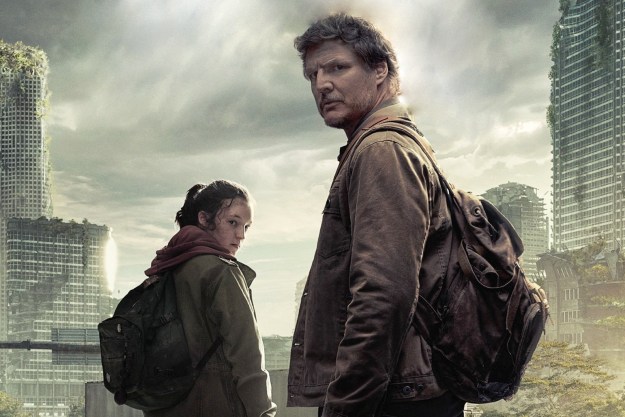Between NFTs, blockchain, and the Metaverse, players need a dictionary to understand all gaming’s trendy buzzwords right now. One of the central concepts that have sprung out of all that trendy tech talk is “interoperability.” While it’s not a difficult idea to grasp on paper, the practicality of it has sparked heated debates between crypto dreamers and the developers who know what goes into making a game.
Take, for instance, the Twitter discourse that arose when musician Mike Shinoda tried to sell his followers on interoperability. “Imagine taking your favorite skin from Valorant, and using it [in] Fortnite. And not paying extra, because you own it. Then using it in CoD, Minecraft, even Twitter, IG,” Shinoda tweeted. It’s a utopian concept, but one that’s easier said than done. Developers like Rami Ismail quickly took to Twitter to explain why that idea is an impractical pipe dream.
Any game that wants to support 'interoperability' would have to agree on a billion things: gravity, forces, sizes, scales, axis, lighting, rendering, everything. And you can't make a God of War in the same context as Mario – so that'd be bad.
— Rami Ismail (رامي) (@tha_rami) January 10, 2022
While Shinoda and many others’ vision of interoperability doesn’t reflect the complex reality of video game development, other implementations are comparatively down to Earth. In fact, NFT-like video game interoperability already exists: It’s called amiibo.
What is interoperability?
Before backing up that wild claim, let’s break down what interoperability actually means. It’s essentially a form of wide digital cooperation where different computers can share and use information, even if they’re created by totally different manufacturers.
NFT advocates want to apply the same idea to video game assets. They posit that when you buy an item in a video game, it should carry over into another game. Supporters of the tech are split on how exactly that’ll work, though.

In the Shinodaverse, interoperability means being able to use an NFT item in virtually any game. Bought a skin you really like in Fortnite? What if you could wear it in Call of Duty without having to pay extra? It’s like having one closet shared between every game. That pitch is what has game developers shaking their heads.
The second version of interoperability is a little more realistic. Rather than players being able to take a skin between every game, an asset acts as more of a key that can unlock content in supported games. Going back to the previous example, your favorite Fortnite skin might not carry over to Call of Duty, but it could perhaps give you a bonus item in Call of Duty (even if it’s not a unique one).
That’s where the amiibo example comes in.
Interoperability explained through amiibo
Amiibo are basically the second scenario of interoperability in action. Nintendo’s plastic figures are cute collectibles, but they have a function too. They can be scanned into different games to give players perks. Scan a Mario figure into Yoshi’s Crafted World and you’ll get a costume based on the plumber’s look.
That Mario amiibo doesn’t just work in one game though. Scan that same figure into The Legend of Zelda: Breath of the Wild and you’ll get some materials. Then scan it into Super Smash Bros. Ultimate and you can store fighter data on it. That one $12 purchase becomes a VIP ticket that gives you free content in dozens of games.

Interoperability advocates apply that same idea to NFTs. Instead of buying a physical figure, you’d purchase a digital asset. Any game developer could choose to grant a user some extra content if they “scan” their NFT into the game, so to speak. You might not get your Bored Ape as a skin when you connect it to Halo Infinite, but perhaps you’ll get some double XP boosts.
That’s been controversial in some instances, though. To unlock fast travel in The Legend of Zelda: Skyward Sword HD, players had to buy a pricey and scarcely produced Loftwing amiibo. Locking exclusive features behind an additional purchase is nothing new for games, but doing so via a limited item that not everyone can buy creates potential problems. It encourages scalpers to buy up products and sell them back for exorbitant prices — and that part’s not so different from the NFT world.

An amiibo isn’t exactly the same as an NFT. Obviously, the big difference is that they’re physical objects. Beyond that, they’re mass-produced items, so they lack the “unique” aspect of NFTs. Though, if any NFT would unlock the same content in a game, does that actually matter? That’s a big question that makes one wonder if NFT technology is actually necessary to implement interoperability at all.
Regardless of that answer, if you want to see the idea in action, pick up an amiibo and start scanning.
Is interoperability possible?
As evidenced by amiibo, gaming interoperability is possible … in some form. However, that current implementation involves developers adding a few extras into a game based on which amiibo players scan. No game gives a truly unique reward for scanning any amiibo (there are nearly 200 figures), with most games opting to give generic rewards for scanning a set of figures.
That would most likely be what happens with NFTs in gaming. When you consider that there could be potentially millions of unique NFTs, it’s impossible to imagine any game giving a unique reward for each without some imperfect automated process.

Similarly, the idea of a skin traveling from game to game and automatically mapping onto any character is laughable at present. Publishers are already having trouble implementing that idea into their own games. Ubisoft’s current NFT experiment has players earning items that only work in Ghost Recon: Breakpoint. Activision also reportedly explored adding NFTs to Call of Duty but ditched the idea after realizing how much work it would entail. If a publisher can’t make an asset work across annualized games in the same series, there’s little hope that the Shinoda future happens anytime soon.
Though other studios may be farther along. Before GSC Game World canceled its NFT plans for S.T.A.L.K.E.R. 2: Heart of Chernobyl, it was planning to have assets carry over between its games. The architect behind the project confirmed that assets were going to work in at least one other title, though it’s unclear if the item would fully carry over or simply unlock content. That would have been a significant first step for the tech.
Ultimately, NFTs and blockchain aren’t actually necessary for interoperability. The main thing they bring to the table is the idea of decentralized ownership so no single game studio owns your asset. However, one could argue that something like an amiibo solves that problem by being a physical object.
For large-scale interoperability to work, the only thing that’s actually required is for disparate studios to come together for a common goal. And that’s about as realistic as a Battlefield gun coming to Madden.
Editors' Recommendations
- Square Enix just set a new bar for video game demos with its latest RPG
- Open Roads is a short family drama video game that leaves a big impact
- What’s new in March 2024: 7 upcoming games that you should check out
- What’s new in February: Final Fantasy VII Rebirth and more upcoming games
- I used ChatGPT to help me make my first game. Don’t make the same mistakes I did




